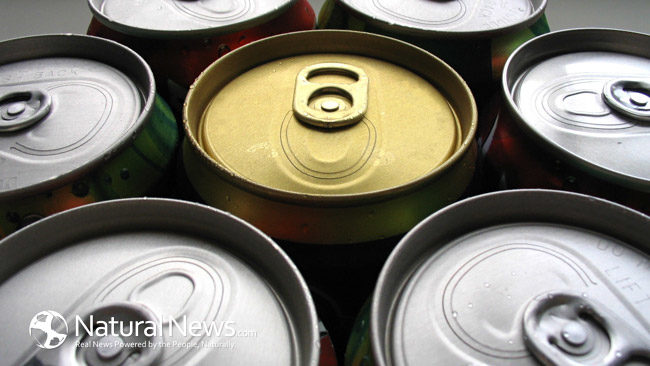General research:
Dyes used for food are chemically classified as azo, xanthene, triphenylmethane, and indigoid dyes. Although certifiable color additives have been called coal-tar colors because of their traditional origins, today they are synthesized mainly from raw materials obtained from petroleum.
Lake dyes for food use are made with aluminum cation as the precipitant and aluminum hydroxide as the substratum
Aluminum
Aluminum is the most abundant metal in the earth’s crust and it is widely distributed. Used to make beverage cans, pots and pans, airplanes, siding and roofing, and foil. Powdered aluminum metal is often used in explosives and fireworks. Very reactive element and is never found as the free metal in nature. It is found combined with other elements, most commonly with oxygen, silicon, and fluorine.
Exposure to the levels of aluminum that are naturally present in food and water and the forms of aluminum that are present in dirt and aluminum pots and pans are not considered to be harmful.
Eating large amounts of processed food containing aluminum additives or frequently cooking acidic foods in aluminum pots may expose a person to higher levels of aluminum than a person who generally consumes unprocessed foods
Unprocessed foods like fresh fruits, vegetables, and meat contain very little aluminum. Aluminum compounds may be added during processing of foods, such as:
- Flour
- Baking powder
- Coloring agents
- Anticaking agents
An average adult in the United States eats about 7–9 mg of aluminum per day in their food
You may be exposed by breathing, eating, or drinking the substance, or by skin contact. However, it should be noted that aluminum is a very abundant and widely distributed element and will be found in most rocks, soils, waters, air, and foods. You will always have some exposure to low levels of aluminum from eating food, drinking water, and breathing air.
Aluminum is found in consumer products including:
- Antacids
- Astringents
- Buffered aspirin
- Food additives
- Antiperspirants
- Cosmetics
Remember, every one of these dyes contiain Arsenic, Lead and Mercury among other toxic chemicals.
A Brief history
In 1856, William Henry Perkin discovered the first synthetic organic dye, called mauve. Discoveries of similar dyes soon followed and they quickly became used to color foods, drugs, and cosmetics. Because these dyes were first produced from by-products of coal processing, they were known as “coal-tar colors.”
By 1900, many foods, drugs, and cosmetics available in the U.S. were artificially colored
A careful assessment of the chemicals used for coloring foods at the time found many blatantly poisonous materials such as lead, arsenic, and mercury being added.
In the 1920s and 1930s, it became clear that the Food and Drugs Act of 1906 did not go far enough to protect the public health from misbranded, adulterated, and even toxic products including an eyelash dye that blinded some women
By 1931, there were 15 straight colors approved for use in food, including six of the seven in use today: FD&C Blue No. 1 (Brilliant Blue FCF), FD&C Blue No. 2 (Indigotine), FD&C Green No. 3 (Fast Green FCF), FD&C Red No. 3 (Erythrosine), FD&C Yellow No. 5 (Tartrazine), and FD&C Yellow No. 6 (Sunset Yellow).
Color additive lakes were in use by this time and were included in the provisions of the 1938 FD&C Act
Most products contain only a small amount of color additive, so it takes only a small quantity to potentially adulterate a large amount of product.
Some people who have kidney disease store a lot of aluminum in their bodies. The kidney disease causes less aluminum to be removed from the body in the urine. Sometimes, these people developed bone or brain diseases that doctors think were caused by the excess aluminum.
Brain and bone disease caused by high levels of aluminum in the body have been seen in children with kidney disease. Bone disease has also been seen in children taking some medicines containing aluminum. In these children, the bone damage is caused by aluminum in the stomach preventing the absorption of phosphate, a chemical compound required for healthy bones.
Very young animals appeared weaker and less active in their cages and some movements appeared less coordinated when their mothers were exposed to large amounts of aluminum during pregnancy and while nursing. In addition, aluminum also affected the animal’s memory. These effects are similar to those that have been seen in adults.
References
- http://www.law.cornell.edu/cfr/text/21/74.1340
- http://www.law.cornell.edu/cfr/text/21/82.51
- http://www.law.cornell.edu/cfr/text/21/73.575
- http://www.law.cornell.edu/cfr/text/21/73.200
- http://www.law.cornell.edu/cfr/text/21/73.100
- http://www.fda.gov/ForIndustry/ColorAdditives/RegulatoryProcessHistoricalPerspectives/default.htm
- http://www.atsdr.cdc.gov/phs/phs.asp?id=1076HYPERLINK “http://www.atsdr.cdc.gov/phs/phs.asp?id=1076&tid=34″&HYPERLINK “http://www.atsdr.cdc.gov/phs/phs.asp?id=1076&tid=34″tid=34
- http://www.law.cornell.edu/cfr/text/21/74.340#a_1
Legal G.R.A.S
http://www.law.cornell.edu/cfr/text/21/184.1
G.R.A.S. List
http://www.accessdata.fda.gov/scripts/fcn/fcnNavigation.cfm?rpt=eafusListing
Some extra reading material





